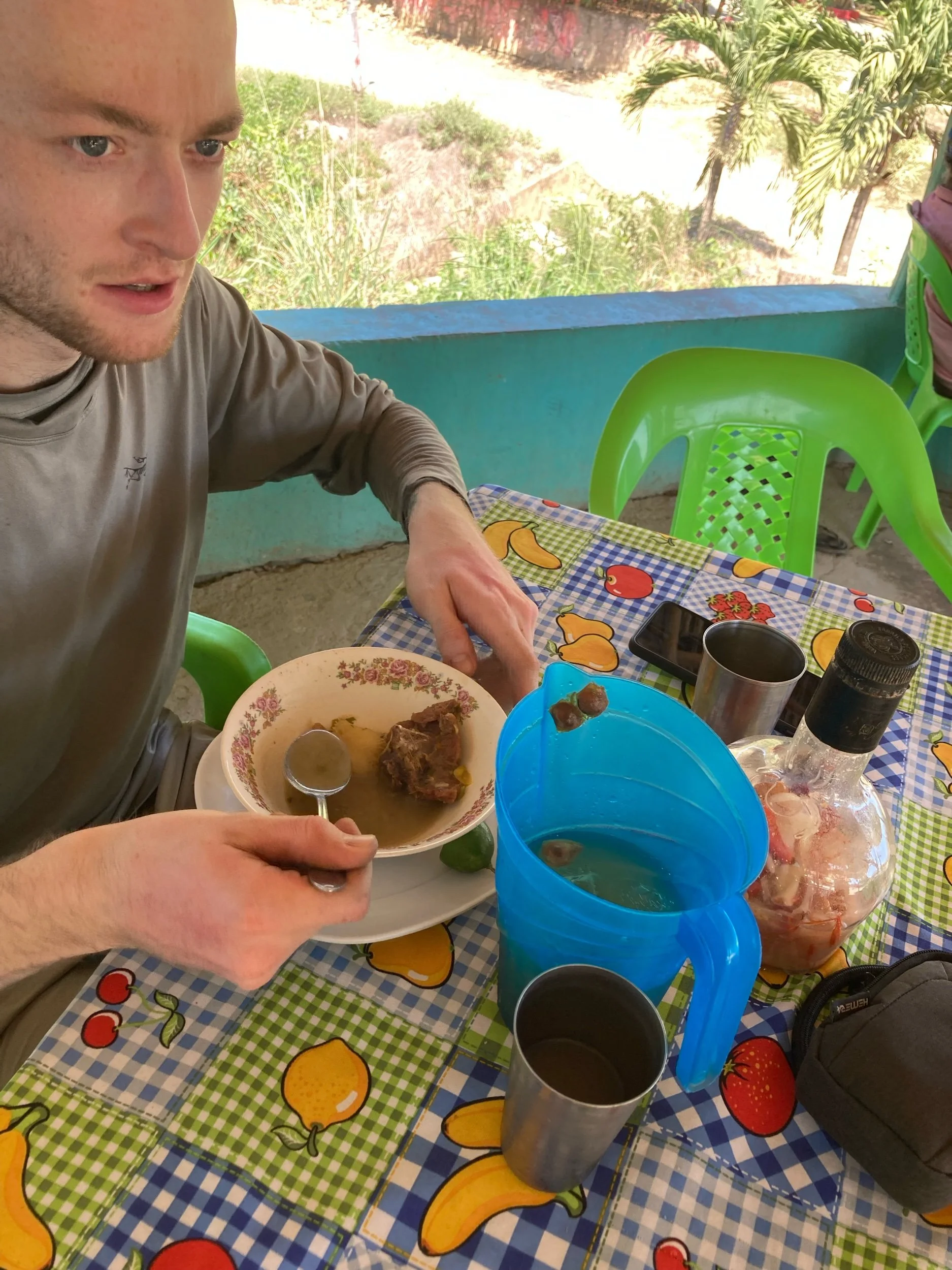5 tips for bikepacking in Colombia
1. Proof of onward travel
Make sure you have proof of onward travel. When we were about to board our flight to Bogotá, our boarding ticket gave an error. We were asked if we had a return ticket from Colombia because if we didn’t, we wouldn’t be allowed on the flight. We explained that we’re travelling by bike and therefore also leaving Colombia by bike. They allowed us to go on board, but strongly recommended us to book a bus or flight ticket because otherwise, migration in Colombia would put us on a flight back to Europe. Between getting off our flight and arriving at the migration desk, we bought the cheapest flight we could find to at least be able to show something. When sharing all this in our PolarSteps, we learned that it is possible to buy a proof of onward travel. If you google ‘proof of onward travel’ or ‘fake plane ticket’, you find plenty of websites that can generate some type of ticket that is much cheaper than buying an actual plane ticket.
2. Getting lunch
During our rides, we often pass through small villages where locals often offer lunch (almuerzo). An almuerzo mostly consists of a soup with meat broth, a chunk of meat and yucca and/or potatoes, followed by a plate of rice, meat/chicken/fish, a small salad, baked banana and some beans or chickpeas. Most of the time, a fruit juice or lemonade is included with the meal. On average, the prices lie between 12.000 and 20.000 pesos.
If you’re a vegetarian and ask if they have a vegetarian dish, chances are big you might get a ‘no’ in return. We have noticed that it helps to ask for a plate with rice, banana, eggs, cheese, vegetables and/or beans - basically the same as a regular almuerzo but without the meat and with eggs instead. Make Google Translate your best friend to learn how to say some stuff in spanish because often times they don’t really speak english.
3. Finding accommodation
When it comes to finding accommodation when we finish riding, we haven’t booked anything in advance other than our first place to sleep in Cartagena. Very often we just see where we end up and if we arrive in a village, we ask people on the streets if they know where we can find a bed. Often we check Google Maps in advance to get an idea of what we can expect, but some accommodations are not listed on Google so it helps to ask around. Most of the time, the hotels/hostels have a free space and up until now it has cost us somewhere between 40.000 and 80.000 pesos per night for the two of us with 50.000 peso as the most common - (smaller) cities are usually more expensive than the really small villages where not many tourists end up. The reason we have spent more nights in an accommodation than in our tent is because so far, we have found it difficult to find suitable camp spots because of the barbed wire almost anywhere along the roads we take. Luckily, the prices of the hotels we have stayed at, always fit in our daily budget.
4. How to get drinkable water
In Colombia, you can’t drink water from the tap. Therefore, we brought a gravity filter: a bag of 3 liters that we fill up at the shower or in a stream and hang up so that the water flows through a filter, right into our bottles. There is no need to treat the water any different or extra way as it is safe to drink once it has passed through the filter. Next to our big filter, the both of us also brought a small filter that we keep close by, in case we need to filter extra throughout the day.
5. Enjoy the fruits
Keep your eyes open when riding your bike, because it is possible find lots of fruits on the side of the roads. From mangos and mandarins, to bananas and watermelons. Check the fruit securely before eating, to make sure no insect was enjoying it first. You might not find it in huge amounts, but if you do: enjoy! And if you don’t: don’t worry, often times tiendas or locals sell fruits from the side of the road.









